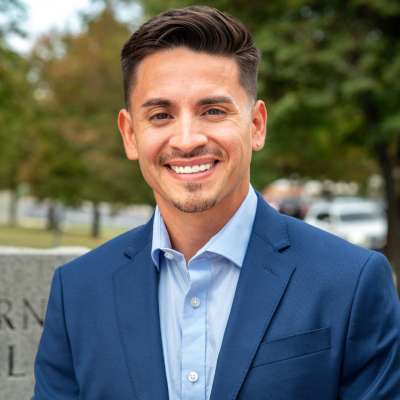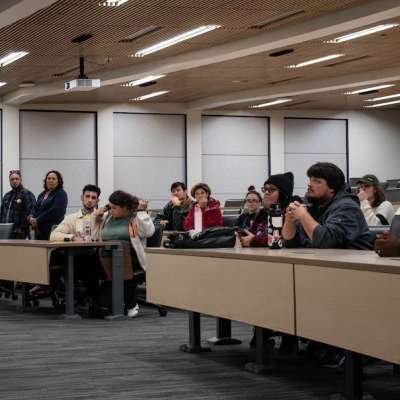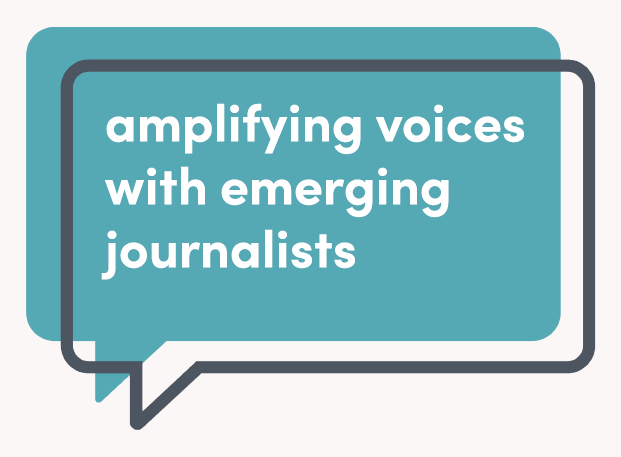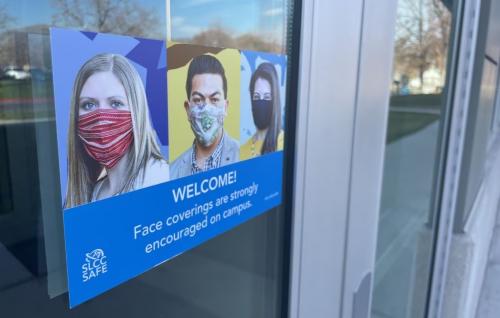Salt Lake City — known as the hub of The Church of Jesus Christ of Latter-day Saints and a crossroads for world-class outdoor attractions — has become the focal point for a burgeoning drag scene.
Drag performance has exploded in Salt Lake City in the past few years, much of it credited to the mainstream cultural acceptance of it. But it hasn’t been without some pushback.
Protests have happened at many shows billed as “family-friendly,” most recently at a back-to-school drag show hosted by BYU students in Provo. Video from a Salt Lake City tea shop’s all-ages drag event went viral and drew complaints nationally. Earlier this summer, a drag group called Quorum of the Queens hosted an all-ages event at the Gallivan Center, which also was met with protests.
Drag performer Trey McEuen, known professionally as Hysteria, said the drag scene has “grown immeasurably” in the last three years. Some of the credit goes to new venues, like the drag bar Why Kiki, which opened last year.
“Now, you go to Why Kiki on a Saturday night, you’ve got three drag shows there earlier in the day that all have 12 people in them, and there’s four new queens showing up who look better than half of you,” McEuen said.
Studying gender through drag
McEuen, an interdisciplinary performance studies major at the University of Utah, is working on a thesis focused on using drag as a means of promoting social change.
For McEuen, drag is as much of an art as it is a science. They are interested in the gender performance of drag just as much as the unconscious gender performance everyone plays a role in on a daily basis.
“We look at strangers on the street and their identity expressions, and we suddenly garner from that unconscious performance aspects,” McEuen said. “We can pick up on things like masculinity, femininity, race [and] gender, and we make assumptions.”
McEuen said they take conscious and unconscious performance in communication and use both in drag to teach about social change, “whether that is something completely ridiculous or a more serious conversation about violence, or about protest.”

(Trey McEuen) Salt Lake City drag performers Skigh Copier (aka Sky Faux) and Trey McEuen (aka Hysteria), pose backstage at a drag show.
Staying safe amid opposition
In order to broadcast social change to wider audiences, performers at the Quorum of the Queens event in July took precautions to ensure the show would be family-friendly.
The event’s organizers warned that protests might turn violent, and that the performers needed to be extra cautious in preparing their stage numbers.
“There was a lot of communication upfront with us performers who were at the event that there may be danger,” McEuen said. “When we did the show, we had to be so aware of this that we had to do 3-minute numbers. They had to be non-explicit, there had to be no sexual themes.”
Often, McEuen explained, performers will do a “reveal,” where they remove an article of clothing to reveal a new, exciting element of their outfit. For instance, a queen might take off a pair of black slacks to reveal a sequin skirt.
“Those were not allowed,” McEuen said. “You were not allowed to take off any articles of clothing.”
Sky Faux, a junior resident performer at Why Kiki, also performed at the Gallivan event. Sky Faux is the stage name of Skigh Copier, who is nonbinary and was assigned female at birth.
Though Salt Lake City has many women who perform drag, few of them adopt a feminine character onstage. Faux recognizes that people, even within the queer community, struggle to understand why women and femme-presenting people would adopt hyper-feminine personas onstage.
However, they said they’ve been welcomed with open arms, save for a few exceptions, by the Salt Lake drag scene.
“Drag is just like any other mainstream art form,” Copier said. “We’re not going to show up to an all-ages drag show in the same look and with the same performance that we would for an over-21 show.”
Copier said drag queens are just like anybody else when it comes to taste and theatrical sensibilities. “We know what’s appropriate and what’s inappropriate,” they said, noting they felt so confident in the age-appropriateness of the Gallivan show that they brought their 8-year-old sister to dance along with them.
But no matter how discerning queens are when constructing acts for audiences of all ages, some people are still opposed to the idea of drag, McEuen said — and a threat of danger continues to exist.
“At Gallivan we had to have double security, and then because it got so elevated, the Salt Lake City Police Department showed up,” they said, adding that the city protected the performers and made sure kids had access to see the performances.
Taking an early interest
Both McEuen and Copier became interested in drag when they were young, and it helped them discover their identities outside of the gender binary.
McEuen secretly watched “RuPaul’s Drag Race” at age 12, and faced their father’s disapproval for it. Copier said they wished they were born male, so that they could be a drag queen.
“Just seeing people happy, and loving themselves, and putting on a celebration of identity, a celebration of grandeur, opulence, spectacle, and self is major for someone, especially when they’re going through puberty and developing a sense of identity,” McEuen said.
McEuen said they believe drag can help young people who are struggling with their identity amid societal expectations of binary gender.
Copier said they gravitated to the gender expression of drag, but also the importance of drag as an art form. Drag, Copier said, encompasses many hobbies they love — dance, music, performance, style and fashion.
“I think drag at any age can be a really cool way of play, of putting on a character,” Copier said. “Just like kids play dress-up, I think it’s the same thing. I think it’s a very welcoming form of entertainment, artform and community.”
McEuen said Salt Lake City’s drag performers will not stop doing what they do, and will not stop hosting all-ages events.
“The future is now, and the future is big,” McEuen said. “Drag in Salt Lake is revolutionary — it’s punk, it’s counterculture, and it’s something that is a force to be reckoned with in the waves of making change. Open your eyes and come to a show.”
Jude Macher wrote this story as a journalism student at Salt Lake Community College. It is published as part of a new collaborative including nonprofits Amplify Utah and The Salt Lake Tribune.
###
Note to media partners publishing work
We also request organizations include the following text either at the beginning or end of the story text:
This story is jointly published by nonprofits Amplify Utah and The Salt Lake Tribune to elevate diverse perspectives in local media through student journalism. Jude Macher wrote this story as a journalism student at Salt Lake Community College. For more stories from Amplify Utah, visit amplifyutah.org/use-our-work.

























